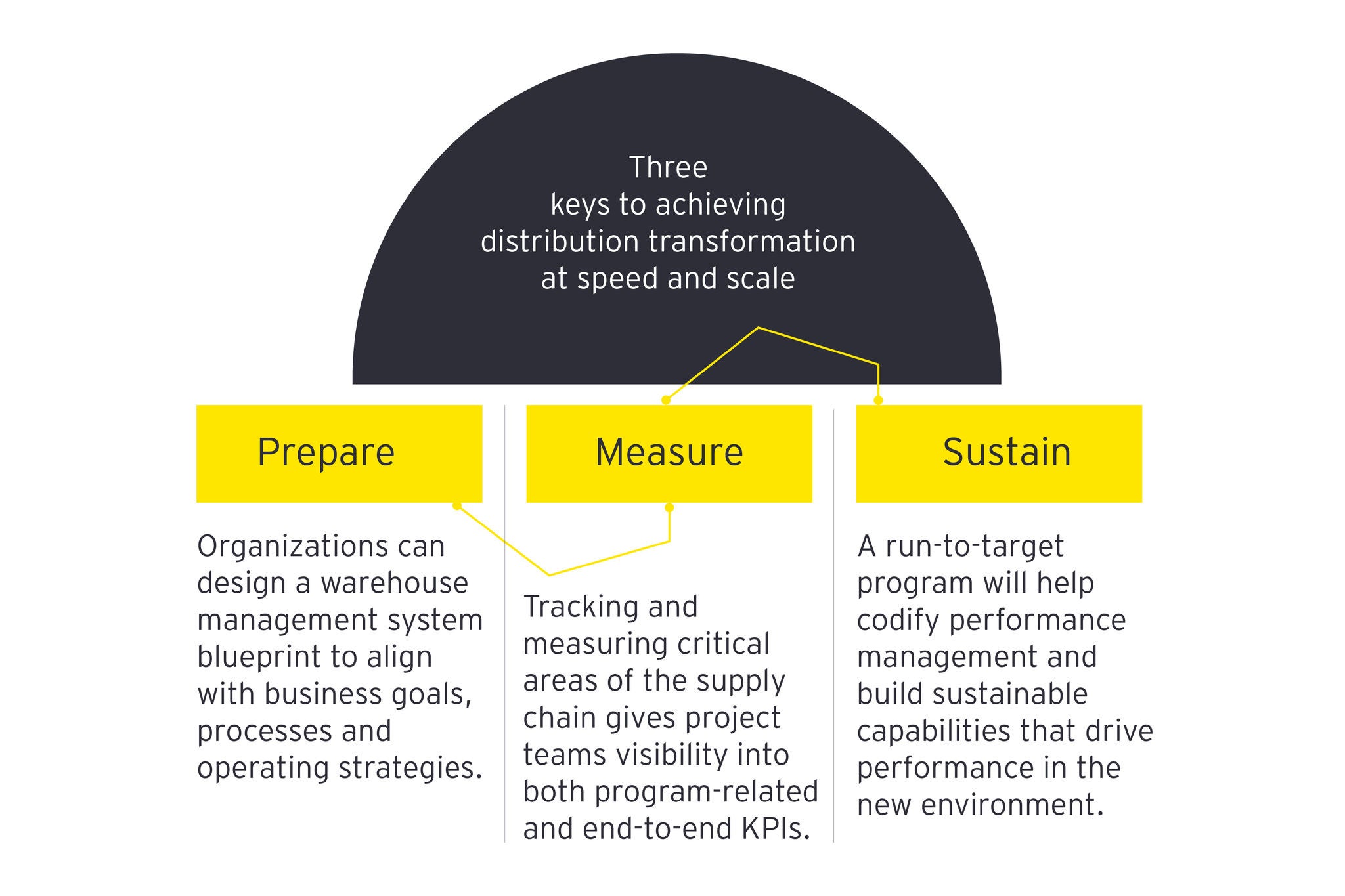EY refers to the global organization, and may refer to one or more, of the member firms of Ernst & Young Global Limited, each of which is a separate legal entity. Ernst & Young Global Limited, a UK company limited by guarantee, does not provide services to clients.
How EY can help
-
Innovative EY supply chain solutions enhance efficiency, drive transformation and optimize end-to-end operations for lasting business success.
Read more
The role of distribution centers within the broader supply chain has assumed increasing importance as organizations contend with disruptions triggered by the COVID-19 pandemic, soaring inflation rates and the evolving demands of consumers for quicker delivery.
Moreover, escalating costs associated with distribution — from a 16% increase in rent per square foot to a 5.2% surge in average hourly earnings within the logistics sector¹ — are compounding the pressure on distribution centers across three fundamental areas. Organizations need to address these areas, defined as optimizing the operating environment, fostering improved workforce performance and elevating technology to streamline workflows, as they transform their distribution networks by deploying a warehouse management system (WMS).
However, most organizations task their IT department with implementing a new WMS, which sometimes leads to a lack of alignment with current and forward-looking capabilities and the overarching business strategy. This often results in a deployment burdened with legacy constraints, limited scalability, unmet performance targets and a suboptimal return on the investment, all of which leave organizations questioning: What went wrong?
The foundation for building and enabling differentiating capabilities, and overcoming challenges, lies in a warehouse transformation framework. This approach contains three pillars: prepare, sustain and measure. These three pillars cover the entire realization program from assessment through deployment, as well as ongoing performance management, enabling the organization to achieve value at speed and scale.







